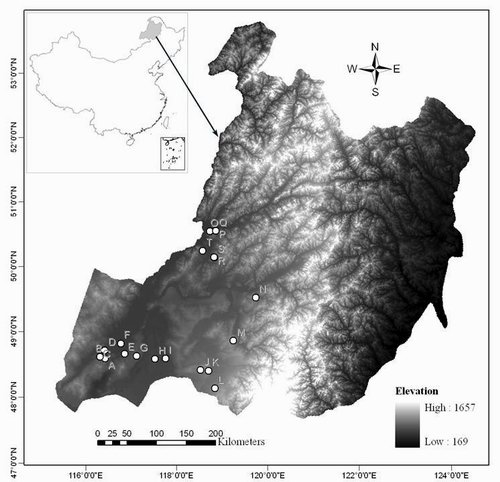Plant Biomass, Soil Water Content and Soil N: P Ratio Regulating Soil Microbial Functional Diversity in a Temperate Steppe: A Regional Scale Study
Soil microbes play key roles in ecosystems and many mediate ecological processes that are central to ecosystem functioning, including nutrient cycling, litter decomposition and the regulation and maintenance of plant biodiversity. Previous studies have indicated that microbial processes, community diversity and composition are controlled by many factors including plant species and edaphic conditions. Although a number of studies have examined spatial and temporal variation of soil properties, processes, and the biomass of soil microbial communities, little information is available on the factors that determine soil microbial community composition and functional diversity in natural environments on a large spatial scale. How soil microbial communities respond to changes in vegetation and climate will be important for understanding the potential impact of alteration in plant distribution, plant productivity, patterns of precipitation and temperature caused by global changes.
Dr. LIU Zhanfeng from South China Botanical Garden, CAS and colleagues from Research Center for Eco-environmental Sciences, CAS and the Institute of Environmental Science of Hulunbeir, Inner Mongolia conducted a regional scale study to assess the driving forces governing soil microbial community functional diversity in a temperate steppe of Hulunbeir, Inner Mongolia, northern China. The results showed that the functional diversity of soil microbial communities was correlated with aboveground plant biomass, root biomass, soil water content and soil N: P ratio, suggesting that plant biomass, soil water availability and soil N availability were major determinants of soil microbial community functional diversity. Since plant biomass can indicate resource availability, which is mainly constrained by soil water availability and N availability in temperate steppes, the study revealed that soil microbial community functional diversity was mainly controlled by resource availability in temperate steppes at a regional scale.
The above research results have been published as a paper in Soil Biology and Biochemistry (2010, 42(3): 445-450), the top international journal in soil science field. This paper was also selected as one of the Top 25 Hottest Articles of the journal from January to March 2010 according to ScienceDirect's statistical results, suggesting that this work has caused attention from domestic and international colleagues.

Location of study area and sampling sites across Hulunbeir grasslands, Inner Mongolia, China
File Download: